Say goodbye to the era where basic pedometers reigned supreme as the sole option for cheap fitness tracking. Nowadays, even low-cost trackers boast advanced training features and robust data collection capabilities, empowering you to monitor and strive toward your fitness and wellness objectives.
Many of these budget-friendly options even come equipped with a plethora of smartwatch functionalities, ensuring you stay connected while on the move. While they may not match the performance level of pricier fitness watches, you need not break the bank to secure a capable device. The top-notch yet inexpensive fitness trackers on the market offer ample insights to keep you motivated and active.
The optimal cheap fitness tracker varies for each individual, as personal needs and goals dictate the essential features. Despite their economical price tags, the selections below are highly competent, presenting a diverse range of capabilities and designs to cater to your lifestyle and preferences.
1. Xiaomi Mi Band 8
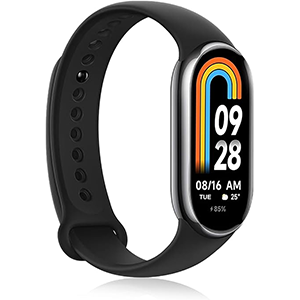
The Xiaomi Smart Band 8 excels in various aspects, standing out with its user-friendly interface for recording workouts and a remarkably comfortable band conducive to sleep. Offering a comprehensive array of features expected from a fitness tracker, it also boasts an unbeatable price point. Its 1.62-inch, 192 x 490 pill-shaped AMOLED display dazzles with vibrant colors, remaining visible both indoors and outdoors. Despite lacking a physical navigation button, navigating through the interface is seamless, achieved by intuitive swiping motions in all directions.
What truly sets the Smart Band 8 apart is the depth of its workout analysis. Unlike competing trackers, it doesn’t necessitate downloading exercises from a companion app, enabling immediate tracking of specialized activities like skiing. Post-workout, it delivers a wealth of data right to your wrist – encompassing heart rate, pace, speed, calories burned, and more. Particularly impressive is its breakdown of time spent in various heart rate zones, ranging from light to anaerobic intensity.
An innovative Pebble mode further enhances its versatility, allowing attachment to shoelaces via a specialized case for detailed running and cycling metrics. This mode provides insights into sprint performance, including metrics like flight ratio and ground contact time, along with overall running form analysis.
The band’s lightweight and comfortable design ensure effortless sleep tracking, complemented by a seamless do-not-disturb feature accessible from the watch face. The detailed sleep insights, including sleep duration and a graphical representation of sleep stages, provide valuable data directly on the wrist, further elaborated within the Mi app. Additionally, it offers insights into average heart rate during sleep and breathing patterns.
Crucially, Xiaomi delivers on its impressive battery life claims, with just 30 minutes of charging sustaining the Smart Band 8 for approximately two weeks of continuous use. This reliability eliminates concerns about interrupted activity or sleep tracking.
PROS:
- Intuitive navigation interface
- Vibrant full-color display
- Comfortable design supporting Pebble mode
- Extensive fitness tracking and sleep monitoring capabilities
- Long-lasting battery life
CONS:
- Lack of physical navigation button
2. Amazfit Band 7
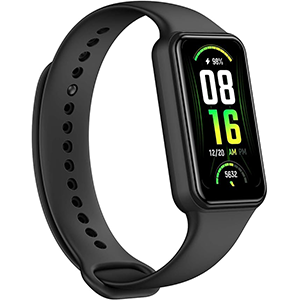
Similar to the Xiaomi Band 8, the Amazfit Band 7 offers a comprehensive range of pre-loaded workout tracking options directly accessible from your wrist. Notably, it features a customizable goal-setting interface, enabling users to establish specific objectives such as burning 500 calories prior to commencing a workout.
Distinguishing itself with the Personal Activity Intelligence (PAI) scoring system, the Amazfit Band 7 utilizes heart rate data from all activities, including untracked ones, to generate a score ranging from 1 to 100. This metric serves as a gauge of overall heart health, encouraging users to maintain a high score through both physical activity and rest. Similarly to the Xiaomi Smart Band 8, it furnishes users with detailed insights into their heart rate zone activity directly on the watch face.
Moreover, the Band 7 features a convenient “one-tap measure” functionality, providing real-time insights into heart rate, blood oxygen levels, and stress levels derived from heart rate variability.
However, the Band 7 exhibits certain drawbacks, notably its slower performance compared to the Xiaomi Smart Band 8, particularly in initiating and concluding exercise sessions. Furthermore, the absence of a physical navigation button occasionally complicates navigation, detracting from the user experience. Additionally, while sporting an AMOLED color display, the screen visibility of the Band 7 falls slightly short, occasionally proving challenging to read even in indoor settings.
On a positive note, the Band 7 earns praise for its relatively comfortable design for sleep tracking, although some adjustment period may be necessary. With continued use during sleep, users can access detailed sleep analyses, including insights into conditions like sleep apnea.
PROS:
- Customizable goal setting for each workout
- Comprehensive activity and sleep tracking capabilities
- Comfortable design
CONS:
- Sluggish performance
- Lack of physical navigation button
3. Fitbit Inspire 3
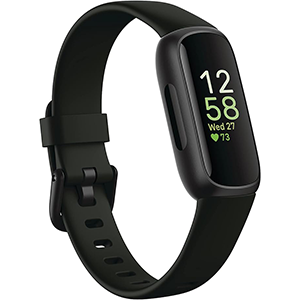
I had high expectations for the Fitbit Inspire 3, given its reputable brand and premium pricing. However, it left me wanting more. While it fulfills its basic function of recording workouts, its capability to track only six activities at a time feels limiting. To include more specialized exercises like weightlifting, users must resort to manually swapping exercise widgets within the Fitbit app. Despite this, it provides essential metrics such as calories burned and heart rate in its performance reports.
A redeeming feature of the Fitbit Inspire 3 is its Active Zone Minute breakdown post-workout, a unique Fitbit metric that evaluates workout intensity and fat burning. The accompanying app offers insightful analyses of various health metrics during exercise and advises on necessary recovery periods. Nevertheless, the inconvenience of needing to consult the phone for deeper insights detracts from the user experience.
Unlike its counterparts, the Inspire 3 lacks direct menstrual cycle tracking functionality on the device itself. However, it delivers on its promised battery life, charging fully in under 45 minutes and lasting around 10 days on a single charge. This reliability ensures uninterrupted tracking of workouts and sleep data without frequent recharging interruptions. Comfort-wise, it rivals the Amazfit Band 7 and is conducive to sleep tracking. Nonetheless, the appeal is somewhat diminished by the fact that its sleep coaching feature is exclusive to premium Fitbit subscribers.
PROS:
- Supports tracking of Active Zone Minutes
- Long-lasting battery life
- Comfortable design
CONS:
- Inability to manually input menstrual cycle data directly on the device
4. Garmin vívosmart 5
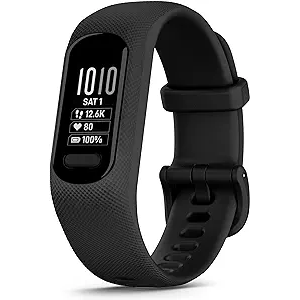
Garmin is renowned for its premium smartwatches tailored for fitness enthusiasts, albeit often accompanied by hefty price tags. The vívosmart 5, however, breaks this trend by offering a more budget-friendly option without compromising on essential features. What sets it apart and earns it our top recommendation is Garmin’s policy of providing unfettered access to all data and training assistance features without additional charges.
Despite its affordability, the vívosmart 5 doesn’t skimp on Garmin’s advanced technology, ensuring precise data collection to optimize your training regimen without breaking the bank. Equipped with a built-in heart rate monitor, it continuously tracks your heart rhythm at rest, issuing alerts for irregularities, and provides insights into your activity intensity. Additionally, it incorporates a pulse ox sensor for monitoring blood oxygen saturation, albeit requiring manual checks during the day.
In line with budget fitness trackers, the vívosmart 5 foregoes built-in GPS functionality, relying instead on connected GPS via your smartphone. Moreover, its selection of sports apps for activity tracking is more limited compared to Garmin’s higher-end models. However, it compensates by offering comprehensive tracking of sleep, stress, and respiration, along with the ability to log fluid intake, offering a holistic overview of your health. Furthermore, the device enables smartphone notifications, enhancing convenience for users.
PROS:
- Free access to all data and features
- Available in two sizes
- Lightweight, minimalist design
- Accurate heart rate and sleep tracking
- Activity tracking for various exercises
CONS:
- Lack of built-in GPS
5. WHOOP 4.0
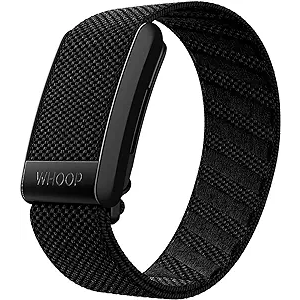
The Whoop 4.0 stands out with its minimalist design, diverging from the typical trajectory of fitness trackers evolving into smartwatches. Eschewing a screen altogether, this distinctive device ensures users remain undistracted by notifications or fixated on data during workouts. However, while its appearance may seem basic, its capabilities are anything but.
Equipped with blood oxygen, skin temperature, and heart rate sensors, the Whoop 4.0 delivers a wealth of data. It automatically detects workouts or allows manual initiation via the app. For strength training, it meticulously tracks weights, reps, and sets. Subsequently, the app leverages this data to furnish users with comprehensive recovery insights, optimizing workout effectiveness.
An additional advantage of the Whoop lies in its compatibility with a range of clothing items, including swimsuits, underwear, and shirts, all designed to accommodate the fitness tracker. This versatility allows users to forgo wristbands, catering to diverse sports and activities. Despite lacking a screen, the Whoop 4.0 commands the highest price tag on our list. Unfortunately, it also necessitates a costly monthly subscription. Nonetheless, its unique design and functionality appeal to many users who prefer a departure from traditional smartwatch-style trackers.
PROS:
- Comfortable for extended wear
- Abundance of recovery insights
- Minimalist, screen-free design
- Versatile wearing options with Whoop accessories
CONS:
- Requires a pricey monthly subscription
Key Considerations Before Purchasing a Budget Fitness Tracker
Before diving into purchasing a budget-friendly fitness tracker, it’s essential to consider your specific goals and usage preferences. While these trackers offer a range of styles and features, aligning with your needs is paramount. Here are some key factors to ponder before selecting the best cheap fitness tracker for you:
Steps & Heart Rate Monitoring
When it comes to fitness tracking, the fundamental sensors to seek are accelerometers and heart rate monitors. Accelerometers track body movements, enabling step counting, while heart rate monitors provide insights into your cardiovascular health and workout intensity. While cheaper models may have fewer sensors, most will include these basics, offering valuable data on your activity and fitness progress.
GPS Functionality
While budget fitness trackers may lack built-in GPS, opting for tethered or connected GPS, reliant on your smartphone, is a viable alternative. This method may not offer pinpoint accuracy but suffices for many users, especially if precise pace and distance tracking aren’t critical or if you’re accustomed to carrying your phone during workouts.
Activity Tracking
Consider your preferred workouts when evaluating a fitness tracker’s activity tracking capabilities. While most trackers support common activities like running and cycling, if you engage in niche exercises like swimming or weightlifting, prioritize models with a broader range of tracking options to ensure accurate data collection.
Battery Life
The longevity of your fitness tracker’s battery is crucial, particularly if frequent charging is inconvenient. Pay close attention to advertised battery life estimates, especially if you prefer devices with longer intervals between charges.
Smartwatch Features
Many budget fitness trackers double as smartwatches, offering functionalities beyond fitness tracking. These may include displaying notifications, providing weather updates, or even allowing quick responses to messages. If you desire these additional smartwatch features, opt for a device with a comprehensive suite of functions compatible with your smartphone.
By weighing these considerations against your preferences and lifestyle, you can select a cheap fitness tracker that aligns with your needs and enhances your fitness journey without breaking the bank.

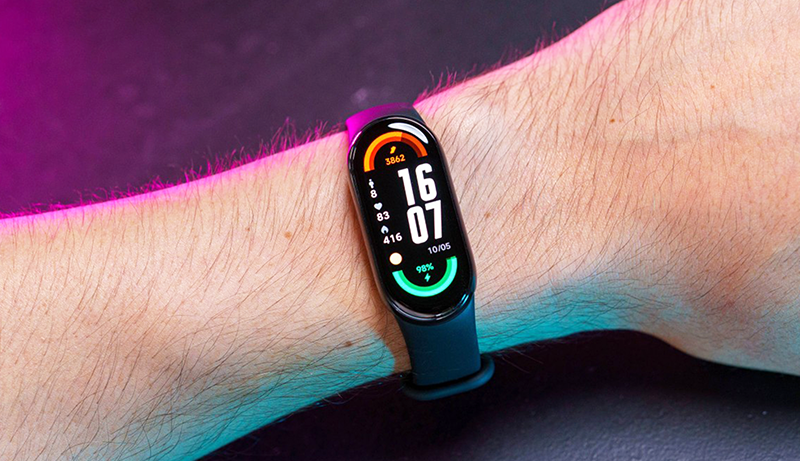



Leave a Reply